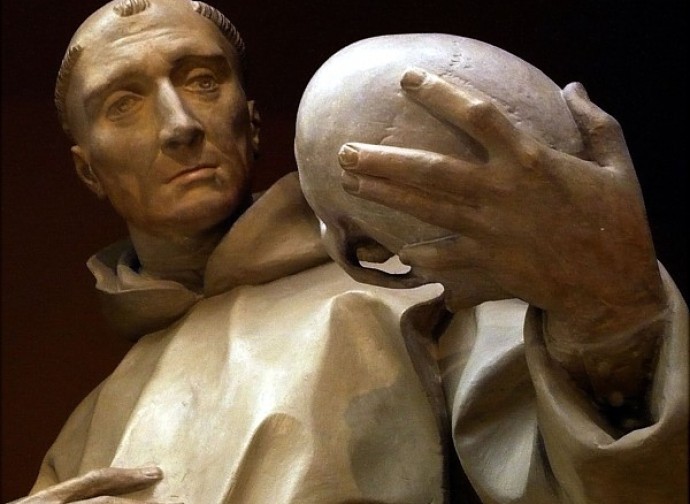Saint Bruno
The hermit life was his heaven on earth. It allowed him to meditate on God and enjoy “a peace that the world does not know, favourable to the joy of the Holy Spirit”. Before detaching himself from the world, Saint Bruno of Cologne (c. 1030-1101), a doctor of theology and philosophy, had directed the school in Reims for twenty years...

The hermit life was his heaven on earth. It allowed him to meditate on God and enjoy “a peace that the world does not know, favourable to the joy of the Holy Spirit”. Before detaching himself from the world, Saint Bruno of Cologne (c. 1030-1101), a doctor of theology and philosophy, had directed the school in Reims for twenty years. There he had among his students the Benedictine Eudes (Odo) de Châtillon, future blessed Urban II. The clash with a bishop he accused of simony forced him to leave France in 1076, but he was able to return four years later following the deposition of the prelate. It was during this difficult period that his vocation for monastic life matured.
He lived for a while in Molesme under the guidance of St Robert (before the latter founded the Cistercian Order), but then he left in search of a more solitary place. With six other companions he asked the Bishop of Grenoble, St Hugh (1053-1132), for help. Hugh personally guided them - driven by a dream vision of seven pilgrims and seven stars (the symbol of the Carthusian monks is a globe surmounted by a cross surrounded by seven stars) - into a valley in the Chartreuse massif. In 1084 the Grande Chartreuse, the first monastery of what would become the Carthusian Order, one of the most rigorous monastic orders in the Church, was founded. Bruno and his confreres began to live in a very austere way. Their days were marked by mainly manual work and prayer, even at night.
His friend Urban II requested him as counsellor in Rome, but he didn't stay there long because the Pope was chased away by the supporters of the antipope Clement III (Guibert of Ravenna), and Bruno followed him to southern Italy. Urban II wanted to appoint him archbishop, but the saint felt called to something else and obtained permission to return to the contemplative life. Roger of Hauteville gave him a territory in Calabria about 800 metres above sea level, which today is called Serra San Bruno in his honour. Here he founded another Carthusian monastery and a hermitage, his favourite place to meet God while meditating on the heavenly mysteries: “In my meditation, the love I already possessed began to grow more and more, like a burning fire”. His common iconographic attributes are a skull, a book and a cross.
Patron of: Calabria; invoked for liberation from diabolical possessions


